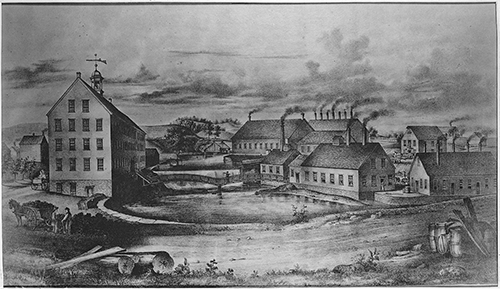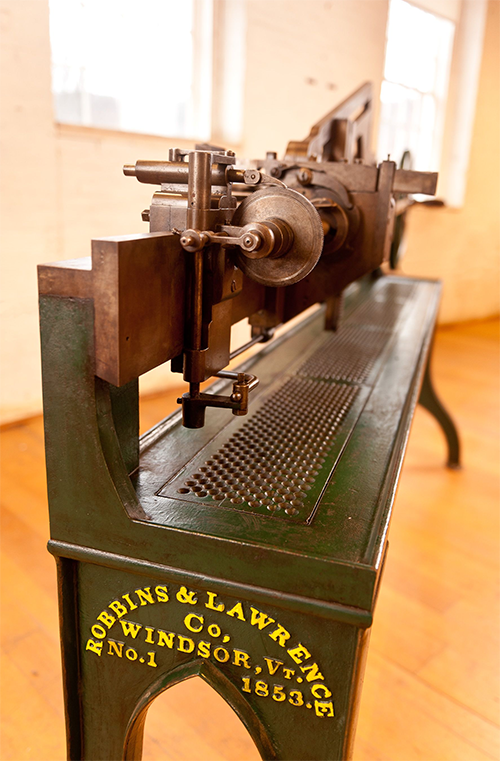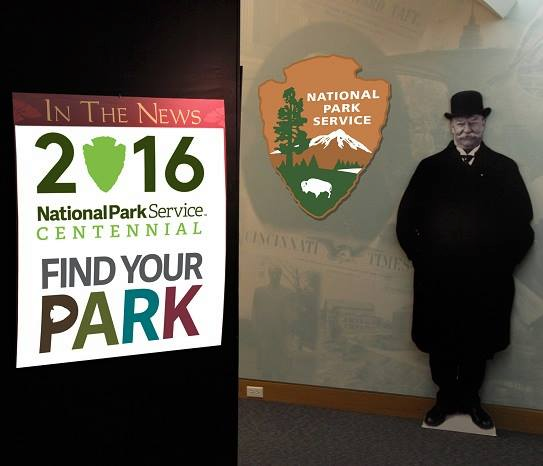American Precision Museum Opens New Exhibition: The Tool Revolution
American Precision Museum Opens New Exhibition: The Tool Revolution
The American Precision Museum announces a new exhibition telling the important story of how one shop in Windsor changed the world. At our site in the 1840s, a new system of manufacturing crystalized. It would be called “The American System.” Here a group of ingenious mechanics created one of the best gunmaking operations in the world. They had won a contract to make 10,000 rifles for the U.S. Army—all with interchangeable parts. While fulfilling that contract, they created a center for innovation, doing some of the best, high-tech work of the day.
Join us when we open May 23 to celebrate the new exhibit that tells this important story. Learn about Richard Lawrence, the gunsmith, who arrived in Windsor at age 21. He was an early adopter of machinery that turned gunmaking from a hand craft into an industrial process. Working alongside him was Frederick Howe, the machine designer, who arrived in Windsor at age 25. He designed advanced barrel drilling, rifling, and milling machines. Henry David Stone learned pattern making and drafting at a young age and developed the turret lathe. After their pioneering work together here, these three young men went on to influence several generations of machine builders who would then turn America into the industrial powerhouse of the twentieth century. Videos, a computer animation, and audio all help bring the machines to life. Mary Azarian has produced woodcut portraits of these important mechanics and engineers.
At the center of the museum is our Working Machine Shop where, in July and August, paid high school students demonstrate historic machines from the museum’s collection. They also work on a Bridgeport milling machine with digital controls and often can be found designing new objects to be printed on the 3D printer, representing the latest in manufacturing technology.
If you come on a week-day you just might catch students engaged in a learning lab before touring the exhibit. This is just one of many new educational initiatives being undertaken at the museum. Teachers may choose one or two new pre-engineering activities when their students visit. In Simple Machines, students first experiment with six basic simple machines and how they combine into compound machines. Then students are tasked with figuring out how simple machines increase the mechanical advantage of the machines on exhibit. In Gears, Belts, and Pulleys students experiment with different ways to transfer energy from one point to another. They then explore how the nearby brook, the building, and the machines all worked together to produce goods. The learning labs are designed to provide students a foundation with which to understand the mechanical world before they explore the exhibits so they may better grasp the truly revolutionary nature of what happened here in the past.
Another section of the exhibit, Arming the Union, explains how the armory here in Windsor played a critical role in outfitting the Union army during the Civil War. The majority of the 1.5 million rifles made for the war were made unsing machinery designed and produced here. This exhibition profiles the workers, the weapons, and the machines that made those weapons. It also demonstrates how the precision tool industry began to serve as the backbone of American industry and military power.
The American Precision Museum is open 7 days a week from 10:00 a.m. – 5 p.m. from May 23 – October 31, 2015. Find out more at www.americanprecision.org

The Robbins & Lawrence Armory today houses the American Precision Museum. In 1846 this is where America’s Tool Revolution began.

This engraving by Ephraim W. Bouve c.a. 1849 shows the entire Robbins & Lawrence complex – the older shop buildings at right as well as the new state of the art water powered Armory erected in 1846 on the south side of Mill Brook.

This rifling machine is one of the machines that helped launch the Tool Revolution in Windsor, VT.
Photo credit: First Light Studios
William Howard Taft National Historic Site

William Howard Taft National Historic Site, Cincinnati's Best Kept
Secret! A visit to Cincinnati's only national park includes a
free
ranger guided tour of William Howard Taft’s boyhood home,
self-guided exhibits, and an introductory video on Taft’s life
and
career.
Tours are conducted at 2038 Auburn Avenue, Cincinnati, Ohio,
throughout the day from 8 a.m. to 4 p.m. All activities are free
and
reservations are not required. Driving directions, A map,
calendar
of events, and other useful information for William Howard Taft
National Historic Site, the birthplace and boyhood home of our
27th
President and 10th Chief Justice of the United State, scan be found
at
www.nps.gov/wiho. Plan your visit soon!"
So glad you could stop in and visit us, and we hope you return
often.


